If you asked me what tournament that I’ve played in was the most fun or the most rewarding, the list would be very short. My first rated tournament. The tournament I played in Russia in 1978. My two North Carolina championships, of course. The 2006 Western States Open in Reno, when I got the chance to play the Bryntse Gambit for the first time. (We’ll get to that story eventually.)
Another tournament on that short list would be the Atlantic Class Championships in Harpers Ferry, West Virginia, in March 1995. Over the chessboard, I had an outstanding result: my first FIDE-rated tournament, my second game against a U.S. champion (and one which I came pretty close to winning), and my second-biggest money prize up to that point. Away from the board, I had a great time, too. Kay came with me, along with our new puppy Willie, and it felt like a family affair. We went to the Harpers Ferry National Historical Park, saw the John Brown Museum, ate lunch at the Hilltop House Hotel and looked at the spectacular view of the confluence of the Potomac and Shenandoah rivers, a view that Thomas Jefferson said was “worth a voyage across the Atlantic.”
In many ways, that’s what this tournament was for me: a confluence of past and future. Things were changing in my life. I didn’t know it yet, but I would move across the country in the following year, and leave my friends in the east behind. At the Atlantic Class Championships, I got to see some of my oldest chess friends again. I played a game against Macon Shibut (see our game 17 years earlier in Year 7 of this series). I won this time, but don’t worry, Macon, I won’t show that game here because I have a better one to show. I also got to hang out with Robin Cunningham (now Robin Joseph), whom I had played many times in North Carolina. Robin also moved to California not long after this tournament and our chess destinies would intertwine there as well. That’s still in the future, but I might mention him again in my 2008 (Year 37) and 2012 (Year 41) posts.
So it’s as if all the stages in my life were there together for one weekend in Harpers Ferry. The Virginia stage, the North Carolina stage, the Ohio stage, and the California stage.
As I mentioned above, this tournament helped me obtain my first FIDE rating, and that is something I was quite proud of. In the mid-90’s, it was still kind of hard to get FIDE ratings. As I understood it then (though my information may not be correct), you had to play at least 9 games in a six-month period in FIDE-rated events against FIDE-rated players, and you had to achieve at least a 2200 rating against them. Otherwise, your results were just discarded and you were still considered an unrated player.
In America, the easiest way to play an a FIDE-rated event was to play in a Bill Goichberg tournament. So I played two that year. I played four FIDE-rated games at the Atlantic Class Championships and six more at the World Open in July. The World Open was not a great tournament for me but not bad either, and when both tournaments were combined, it turned out that I had hit the 2200 cutoff right on the nose:
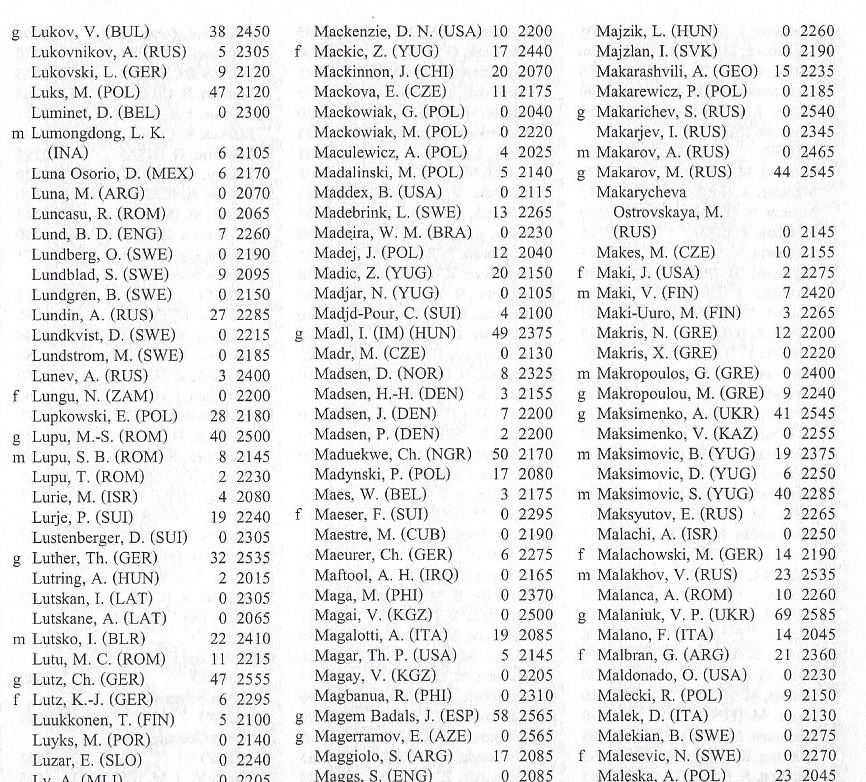
(This list was photocopied from Chess Informant 65. In those pre-Internet days, that was the only way to find out what my FIDE rating was!)
Some people say that FIDE ratings are about 100 points lower than USCF, so my 2200 FIDE rating would be the equivalent of 2300 USCF. Since I never actually made it to 2300 USCF, maybe you could say that this was my highest official rating ever.
So let’s get to today’s game, my most memorable one in the Atlantic Class Championships. In my tournament career I’ve played four games against past, present or future United States champions: Shabalov, Yermolinsky, Browne, and Nakamura. Each one was memorable in different ways. The one against Shabalov was just bad; I was too star-struck and didn’t play well. In this one, I think I put up a much better fight. In fact, holy cow, I got to “sacrifice” a queen against a grandmaster! (I put “sacrifice” in quotes because Yermolinsky would have had to give the queen back, and in fact he chose not to accept the sacrifice.)
This is a complex game and I still don’t understand everything that happened. But I’ll do the best I can, assisted as always by my able friend, Fritz the computer.
Alex Yermolinsky — Dana Mackenzie, 3/10/1995
1. d4 Nf6 2. c4 e6 3. Nf3 d5 4. Nc3 Bb4
I was playing this variation a lot in those days, a back-door route into the Nimzo-Indian. But it technically goes by the name of Ragozin Variation.
5. cd ed 6. Bg5 h6 7. Bxf6 Qxf6 8. Qa4+ Nc6 9. e3 O-O 10. Be2 Rd8 11. O-O …
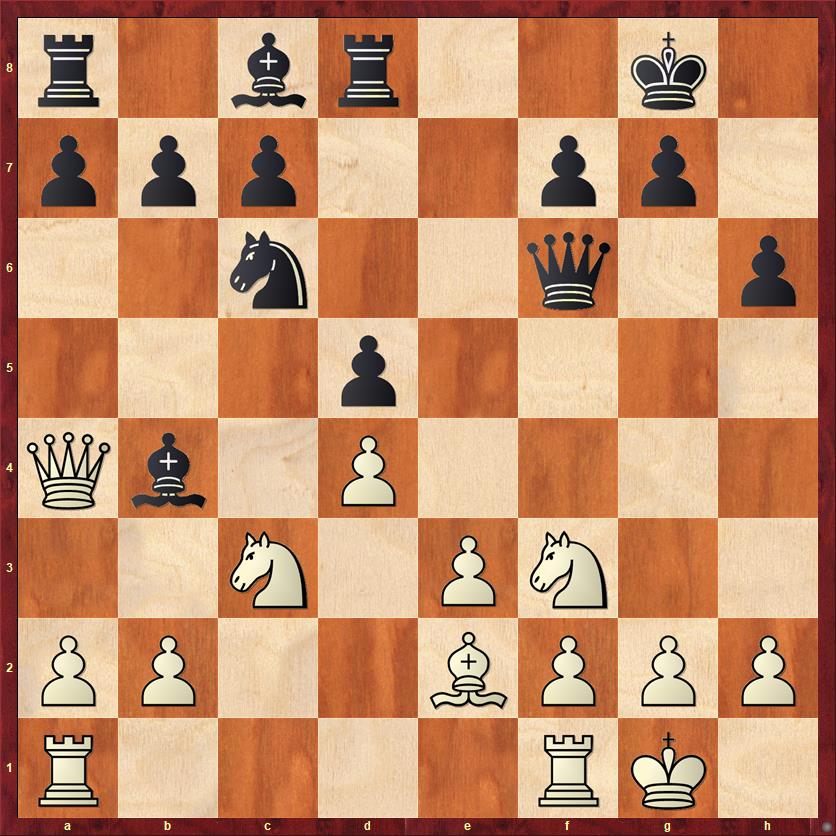
FEN: r1br2k1/ppp2pp1/2n2q1p/3p4/Qb1P4/2N1PN2/PP2BPPP/R4RK1 b – – 0 11
Up to this point I was feeling pretty good about my game. Yermo’s play seemed surprisingly tame to me, and he has given up the two bishops without gaining any obvious benefit from it. But my next decision is a little bit questionable.1
The main problem for Black is that his pieces all seem slightly misplaced. The bishop is no longer doing anything on b4. The knight feels vulnerable on the open c-file, but for the time being it can’t move because it needs to defend the bishop.
This position has occurred plenty of time in master play. One plan for Black is to play … a6, … Be6, and … Bd6, keeping the bishops in the middle of the board. The dark-squared bishop is given the task of keeping the c7-pawn defended.
But Black’s 10th move can also be the prelude to a more radical deployment, with … Bf8, … Ne7, … a6 and … c6. With this plan, Black says “Come and get me” on the queenside. If White goes for a minority attack, Black will bring his knight around to d6 and just hold the fort. Black hopes that the dark-square bishop will be destined for greater things in the future, but for now he keeps it in reserve on f8.
Of course, I did not know any theory, and I chose a plan that has almost never been played before. I thought, why not just take on c3, before he has a chance to defend the knight with Rfc1? This will close the c-file. I felt that it would be easier to prevent an attack on the half-open b-file than an attack on the half-open c-file, because I can put my bishop on f5 and keep White’s rooks away from b1.
11. … Bxc3?!
As we’ll see, the one flaw in my thinking was that White will soon enough play c3-c4, getting both a half-open b-file and a half-open c-file. That’s probably why, according to ChessBase, my move has only been played twice in master competition. But one of those two times was by the former world correspondence champion, Yakov Estrin! So I’m in good company.
12. bc Bf5 13. Rfc1 Ne7
If, for example, 13. … a6 14. c4 dc 15. Qxc4 White will have pressure on the c-file. I decided that I really needed to put my pawn on c6.
14. c4 c6 15. Qb3 …
Going over this game, I’m really struck by Yermolinsky’s patience. Here he could play 15. cd Nxd5 16. Nd2 (also Ne5 is worth considering), trying to obtain a pawn duo on d4 and e4. He had many chances to do this over the next few moves, but he seems happy to make small improvements to his position, perhaps awaiting a better opportunity to play e3-e4 later.
15. … Rab8 16. a4 Be4
I, on the other hand, am worried about e3-e4 and doing everything I can to prevent it.
17. Nd2 Qg5
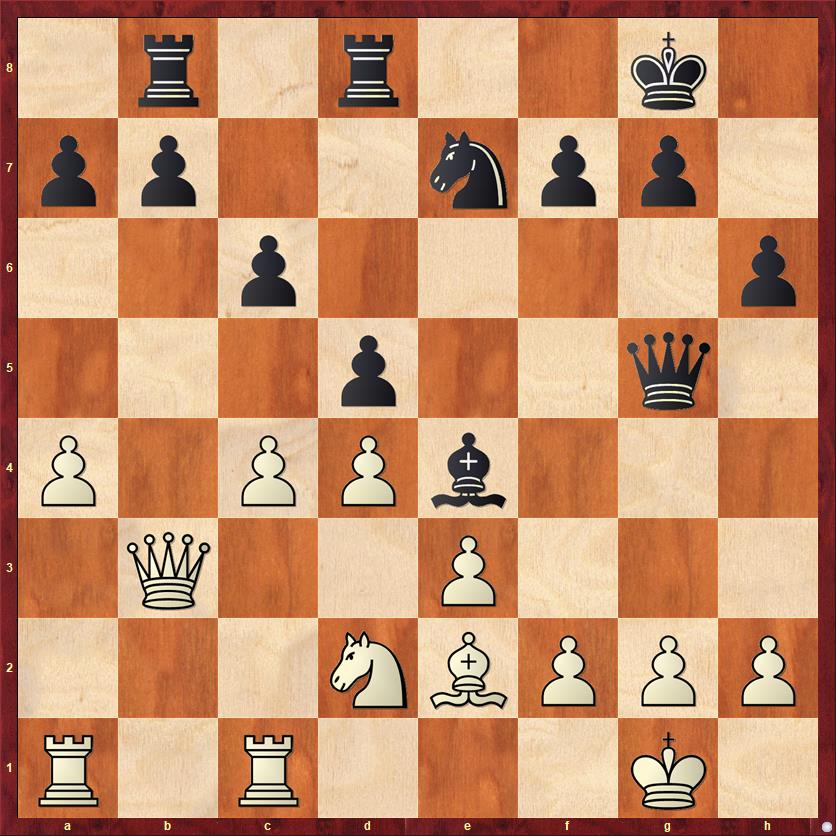
FEN: 1r1r2k1/pp2npp1/2p4p/3p2q1/P1PPb3/1Q2P3/3NBPPP/R1R3K1 w – – 0 18
Always threaten mate. He might miss it, right? Well, maybe not.
In this position White has several options, and the one that Yermo chose was the one I was least worried about!
Option A is to trade knight for bishop with 18. Nxe4 de. This is the most direct way to try to prove that Black’s move … Be4 was wrong. However, to give his bishop room to maneuver, White will probably need to follow up with 19. c5. This isn’t a bad move, but it does give Black’s knight a terrific outpost square on d5. As long as Black can keep the blockade in place, White might have trouble making progress.
Option B is to drive the bishop away with 18. f3. But I think Yermo probably looked at lines like 18. … dc 19. Bxc4 Bd5 (just like the game) 20. Ne4 Bxc4 21. Rxc4 Qg6 and didn’t like it because White has weakened his pawn structure and gained no real benefit.
Option C is the one he chose:
18. Bf3 dc 19. Rxc4 Bd5
Also perfectly reasonable is 19. … Bxf3 20. Nxf3 Qd5, which actually makes more sense from the point of view of making it hard for White to get the e3-e4 break. But how much of an issue is that, anyway? If White plays e3-e4, are those pawns a strength or a target? It’s really hard to tell. Again, Yermolinsky decides not to make any commitments but just to push his a-pawn, with the goal of provoking weaknesses in my queenside.
20. Bxd5 Qxd5 21. Qc3 Qd7 22. a5 b6 23. Nf3 …
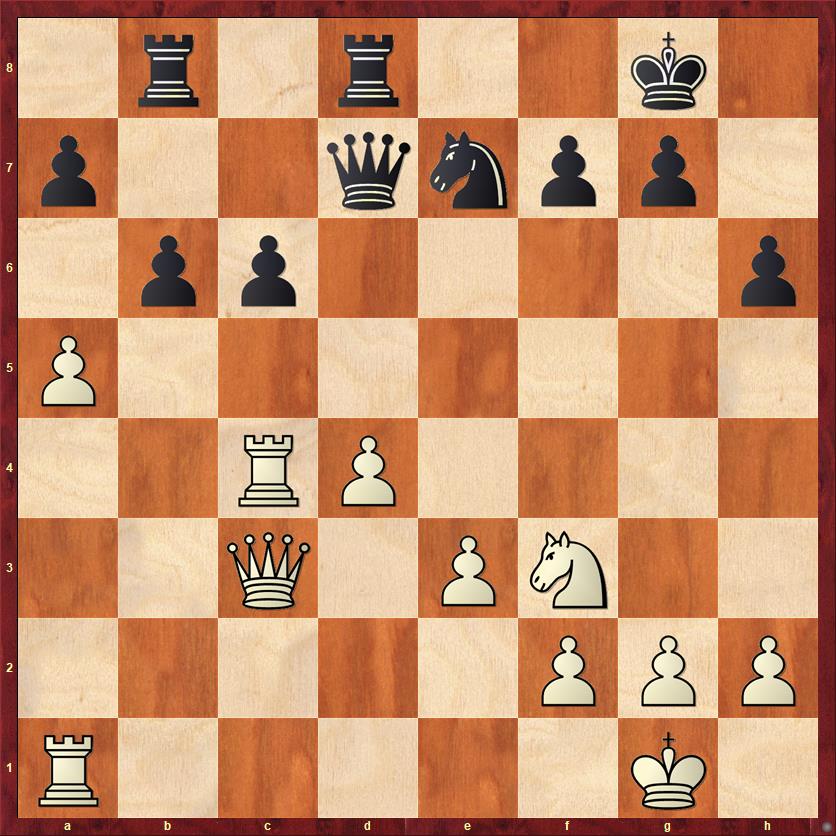
FEN: 1r1r2k1/p2qnpp1/1pp4p/P7/2RP4/2Q1PN2/5PPP/R5K1 b – – 0 23
If I could pick one position and one move from my chess career to sum up the Dana Mackenzie philosophy of chess, this might be the position. One of my goals in any position is to fight for the initiative. I have no patience to defend against a protracted siege against my b- and c-pawns. I want to create some threats of my own, and give my opponent something to worry about. Secondly, I love to play “impossible” moves. My favorite kind of move is one that my opponent thinks he has definitely prevented. Such moves are strong from the psychological point of view, and also often strong from the chess point of view. If he thinks that the move is impossible, and you think it’s possible, then one of you has missed something.
In this case, I think that Yermolinsky missed something — or, at the very least, he underestimated my sacrifice.
23. … c5!? 24. dc Qd1+!
This is my “queen sacrifice,” although it isn’t really a sacrifice because I am sure of getting the queen back. In the game it ends up being just a fancy way to trade material, but in the process White’s pieces become somewhat uncoordinated.
It might be worth pointing out that this possibility could have been prevented if Yermo had played 21. Qc2 instead of 21. Qc3, but who could have anticipated this?
25. Qe1 …
Yermolinsky declines the “sacrifice.” Here are the other options:
(a) If he accepts the “sacrifice” with 25. Rxd1 Rxd1+ 26. Ne1, then I force him to give back the queen with 26. … Nd5. After 27. Qc1 Rxc1 28. Rxc1 ba I have won back the pawn. You could argue that my doubled a-pawns don’t “count” as two full pawns. But that argument doesn’t really hold water, because there are many variations where we would trade his c-pawn for my lead a-pawn, and then my remaining a-pawn would definitely “count.”
(b1) The most interesting variation is 25. Ne1. Now White is, in fact, threatening to take my queen, so I have to play 25. … Qe2. Do I get compensation for the pawn? One variation I looked at is 26. Rd4 bc 27. Qxc5 Rxd4 28. Qxd4 Nc6 (this is a little bit better than 28. … Rb2 29. Qd8+ Kh7 30. Qd3+, and the queen trade helps White). Now 29. Qd3? Qxd3 30. Nxd3 Nxa5! wins back the pawn, so White instead has to play something like 31. Qc5 Rb2! I’m happy with this position for Black, and Fritz agrees that it’s about equal.
(b2) But Fritz says White can improve on this with 25. Ne1 Qe2 26. ab! ab. This pawn trade has the disadvantage (for White) of wiping out all the queenside pawns, but the advantage (for White) of allowing his a1 rook to get into the action. Now when we play as in the previous line, with 27. Rd4 bc 28. Qxc5 Rxd4 29. Qxd4 Nc6, White has new resources like 30. Qe4 (found by the computer) when 30. … Rb2?? is not possible because of back rank mate, and other moves allow White to play 31. Qc2 and either trade queens or drive Black’s queen away from e2. But maybe 29. … Nf5 would be a better try than 29. … Nc6.
I think this would be a tremendously difficult endgame, with the pawns all on the kingside and so many pieces (Q+R+N for each player) still on the board. In general Black’s best chance is to keep all the pieces on the board as long as possible, and especially to use his aggressively placed queen and rook to make life uncomfortable for White’s king. If White can trade down to R+N+4P vs. R+N+3P his chances get better, and if he can trade all the way down to R+4P vs. R+3P or N+4P vs. N+3P, he is probably winning.
In light of these comments, you can see why Yermolinsky thought it was safer and more thematic to trade queens right away with 25. Qe1.
25. … Qxe1+ 26. Nxe1 b5!
I claim that my passed b-pawn is at least as good as his passed c-pawn, and moreover White’s queenside pawns are starting to look a little bit overextended.
27. Rc3 Nc6 28. Nd3? …
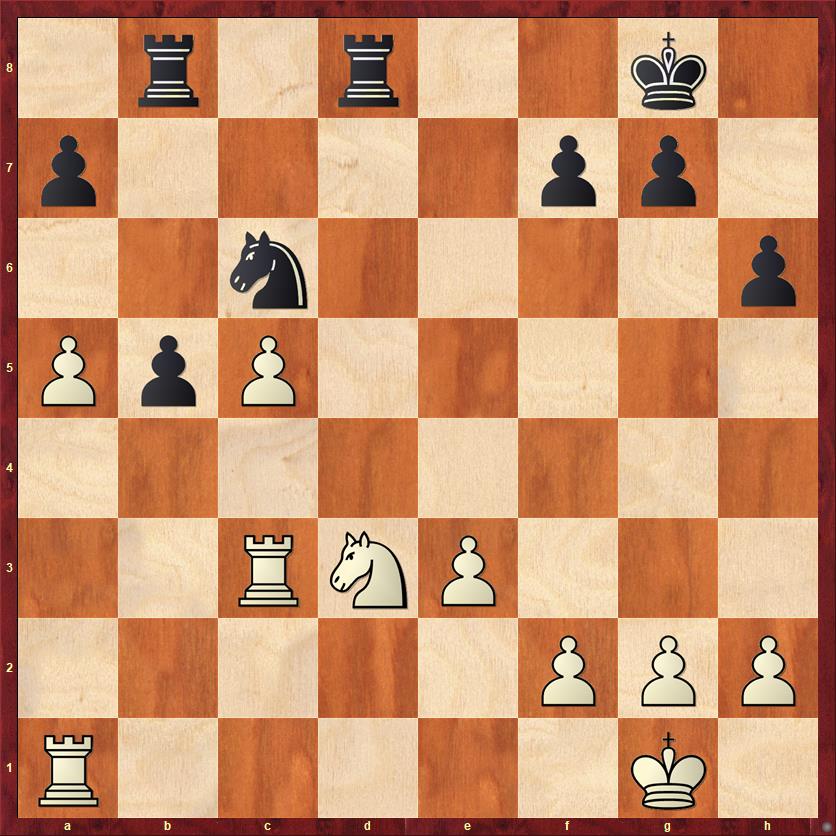
FEN: 1r1r2k1/p4pp1/2n4p/PpP5/8/2RNP3/5PPP/R5K1 b – – 0 28
O! M! G! An actual mistake by the grandmaster! After White’s move Fritz’s evaluation drops from 0.3 pawns in favor of White to 1.0 pawns in favor of Black. That’s a big difference, and not likely to be a computer error. What happened? And what should I have played here?
The answer is that I should have played Mackenzie chess! The key move is 28. … b4! After the forced 29. Rb3 Rb5, Black has huge pressure on several weak points in White’s position: the a5 pawn, the c5 pawn, the d3 knight, and most importantly the back rank.
I think that I probably didn’t play this move because I thought my b-pawn would be just as weak as White’s pawns. But sometimes you can’t rely on general principles, you have to work through the tactics. If 28. b4 29. Rb3 Rb5 30. R1b1 Nxa5! 31. Rxb4 Rxb4 32. Nxb4 Rb8! and the pin is deadly. Black threatens … Nc6. If White tries to break the pin with 33. Rb2, then 32. … Nc4 33. Rb1 a5 wins the knight. Or if White tries to go after Black’s knight with 33. Ra1, then 33. … Rxb4 34. Rxa5 Rb1 mate. As I said, Black just has too many threats for White to defend them all!
Another try for White is 30. a6, but here too Black has a very remarkable move: 30. … Ra5! If 31. Rxa5 Nxa5 White loses the knight on d3, or if 31. R1b1 Ra3! sets up an x-ray attack on the knight on d3. Again, taking on b4 just leads to death for White: 32. Nxb4?? Rxb3 33. Rxb3 Rd1 mate. Or if 32. Rxa3 ba, Black’s a-pawn is very dangerous and probably winning.
As I said, I think that intuitively I considered … b4 to be too “risky” and I played the more “normal” plan of doubling my rooks on the d-file. It wasn’t a bad plan, but I just didn’t spot the “abnormal” possibilities in the position. Of course, Yermolinsky overlooked them too. He should have played 28. Kf1, which would have eliminated all of the back-rank threats. These slight misjudgments by both players just show how difficult the position is.
28. … Rd7?
Missing a chance at my first lifetime victory over a grandmaster. Sigh. Still, Black has excellent chances for a draw. I didn’t see how Yermolinsky would break my blockade of the queenside pawns, and my doubled rooks on the d-file will be no joke.
29. Kf1 R8d8 30. Ke2 a6 31. Rd1 Kf8 32. Rb1 …
It looks as if Yermolinsky can’t make up his mind where to put the rook, and indeed that is possible. However, it’s also possible that he played this loss of tempo deliberately. As we will see, the loss of a tempo now enabled him to win two tempi later, and that was just enough to win the game. If that was indeed his intention all along, I think that it is an awesome, GM-level idea.
32. … Ke7 33. Nb4 Nxb4 34. Rxb4 Rd2+ 35. Kf3 …
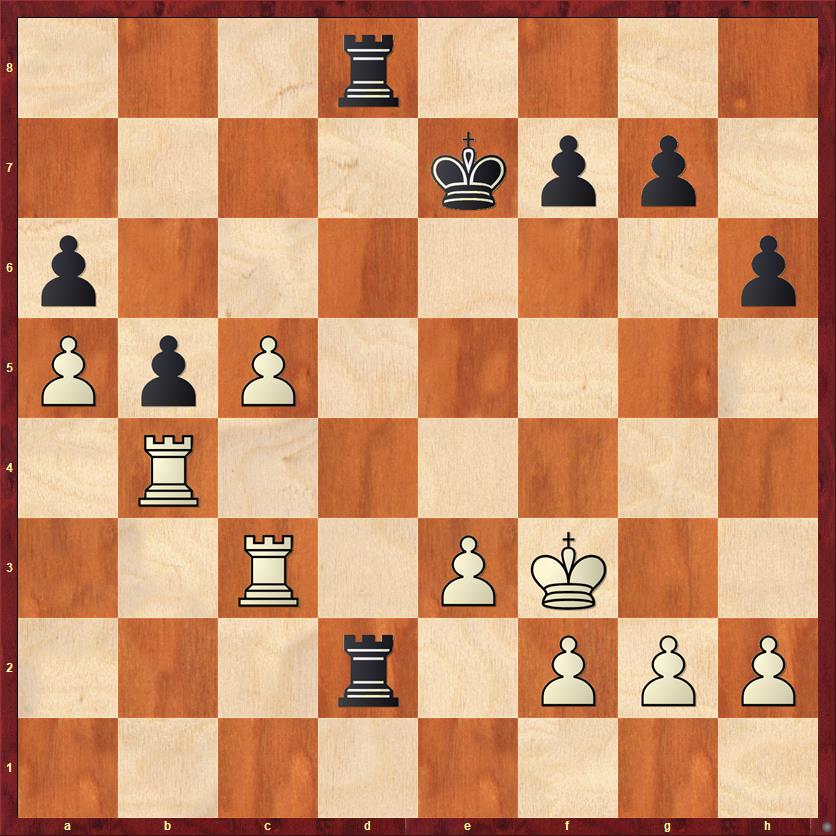
FEN: 3r4/4kpp1/p6p/PpP5/1R6/2R1PK2/3r1PPP/8 b – – 0 35
The last position was where I blew my chance at my first lifetime victory against a grandmaster. In this position, I blew my chance at my first lifetime draw against a grandmaster.
If you just think about this position schematically, it’s very simple. To draw the game, Black must re-establish his blockade on the queenside as quickly as possible. Therefore 35. … Kd7 was the right move. A key point is that 36. Rd4+ doesn’t get White anywhere, because I just play 36. … Kc6.
My mistake here was that … I played Mackenzie chess. I saw the possibility of doubling my rooks on the seventh rank. I saw the possibility of attacking White’s a5 pawn, and maybe getting connected passed pawns of my own. In short, I wasn’t playing for a draw — I was playing for a win!
35. … Ra2??
After the game I blamed my loss partly on time pressure. I wrote in my notebook, “Avoid the temptation to enter tactical complications in time trouble!” I think this is true, to some extent. Many are the games I’ve lost by playing sharp variations in time trouble and missing some tactical trick.
But the honest truth is that even if I had all the time I wanted, I still would play 35. … Ra2. Nine times out of ten. Maybe even ten times out of ten. It just looks soooo good. I just have to tip my hat to Yermolinsky, who understood this position better than I did. He realized, and I didn’t, that Black needed his rook on d2 for defense.
The honest truth also is that Mackenzie chess doesn’t win all the time. There is no one dogma of chess that wins all the time. That’s what makes this game so hard. On move 28 I went wrong by playing it safe, and on move 35 I went wrong by not playing it safe.
36. Re4+ Kf8?!
A painful move. Now you see what I mean by saying that White lost a tempo in order to gain two tempi. His moves Ra1-d1-b1 lost a tempo. As a result, my king was on e7 rather than f8. By going back to f8, I have lost two tempi because Kf8-e7-f8 puts my king back on the same square it was.
Alas, the alternative 36. … Kd7 also loses, and it’s because my rook on a7 is too far away to defend. White plays 37. c6+ and now there are two main lines.
(a) 37. … Kd6 38. c7! Rc8 39. Rd4+ Ke7 40. R3d3!! Notice how Black’s rooks are nowhere to be found, while White’s rooks have suddenly taken over the board. This would never have happened if I had kept my rook on d2. After 40. … Rxc7 41. Re4+ Kf6 42. Rd6+ Black’s king is in a mating net, and I invite you to work through the details yourself.
(b) A slightly more prosaic line is 37. … Kc8 38. c7 Rf8 39. Re7 Rd2. Black’s rook makes haste back to defend the king, but returns just a bit too late. 40. Rc6 Rd7 41. Rxd7 Kxd7 42. Rxa6 Kxc7 43. Ke2 is winning for White. (But not 43. Rb6?? Rb8, which is a draw!) It took me a few times playing this variation out against the computer to convince myself that Black is truly lost.
Two comments are in order. First, I obviously did not see all these tactics over the board, when I was in time trouble. I only saw that 37. c6+ with the likelihood of Re7 to follow looked extremely scary. I probably should have tried 36. … Kd7 anyway, but time pressure makes me do illogical things. One move I play too aggressively, the next move I panic and play too defensively.
Second, please observe that Yermolinsky is in complete control of his nerves and his chess. I’m sure that he did work out the winning combination in these lines. I have nothing but admiration for the way he played this endgame. It’s why he is a grandmaster and a U.S. champion.
37. c6 f6 38. Rd4 Rc8 39. Rd7 b4
Too little, too late.
40. Rb3 Rxc6 41. Rxb4 …
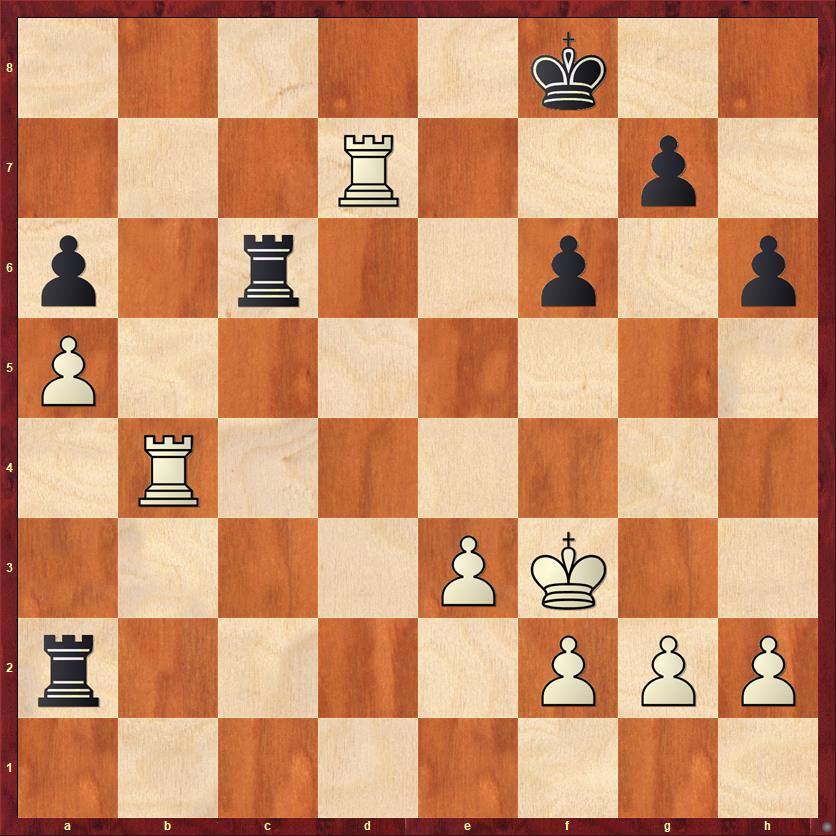
FEN: 5k2/3R2p1/p1r2p1p/P7/1R6/4PK2/r4PPP/8 b – – 0 41
If only I had time for 41. … Rxa5 followed by … Rb5, I would have not a care in the world. But because of the tempo that Yermolinsky won earlier, 41. … Rxa4 is followed by 42. Rb8+ and mate.
41. … Rc8 42. Rbb7 …
Another irony: when I played my 35th move, I thought I was going to get doubled rooks on the seventh rank in the near future. That still hasn’t happened, and instead it’s White who has doubled rooks on the seventh rank. What kind of magic wand is Yermolinsky waving over the board?
42. … Rxa5 43. Rf7+ Ke8 44. Rxg7 Rf5+ 45. Ke4 Re5+ 46. Kf4 Rg5 47. Rh7 Kf8 48. Rh8+ Rg8 49. Rxh6 Rxg2 50. Kf3 resigns
There are no moral victories in chess. A loss is a loss. But I think this might be my “best” loss ever.
Speaking of “good” losses, I will now bring my tenure saga to its conclusion. As I wrote in my last post, Kenyon denied me tenure in 1994, on the grounds that my teaching was inadequate. This was a decision made completely by the president and provost, who had never seen me teach. My department was unanimously in favor of my getting tenure. I filed a grievance, and the grievance committee upheld my complaint, on the grounds that the president and provost had misinterpreted the student evaluations as negative when they had in fact been neutral to positive.
Unfortunately, my department never got to see the evaluations or the grievance committee’s report. So in 1995, when I was re-evaluated for tenure, they came into it with the psychology of trying to figure out, “What is wrong with Mackenzie’s teaching? Why are his evaluations not up to snuff?” Because they were looking for problems, they found problems, and on the second go-around they no longer supported me for tenure.
I’m not saying that what they did was wrong. All I asked for in the grievance was a chance to be judged by my peers. I got that chance, and they found me wanting.
Furthermore, I completely agree that teaching was not my greatest skill. There were many times, I’m sure, when I approached it as a burden. In the end it was best for me to try something different — to try a completely new career, in which I would be utilizing my strengths rather than covering for my weaknesses. I didn’t know yet what that career would be. We’ll find out in the next installment of this series!



{ 1 comment… read it below or add one }
I can’t help thinking that you were better off leaving a University where the president and provost would do this sort of secret blackballing.
(Disclaimer: I never had tenure myself, and after 29 years in the same academic department had one grant too many fail and am now a Research Scientist rather than a faculty member. I’m actually pretty happy with the outcome, though it was painful while it was happening. But you can see that my view of tenure might be a bit biased.)